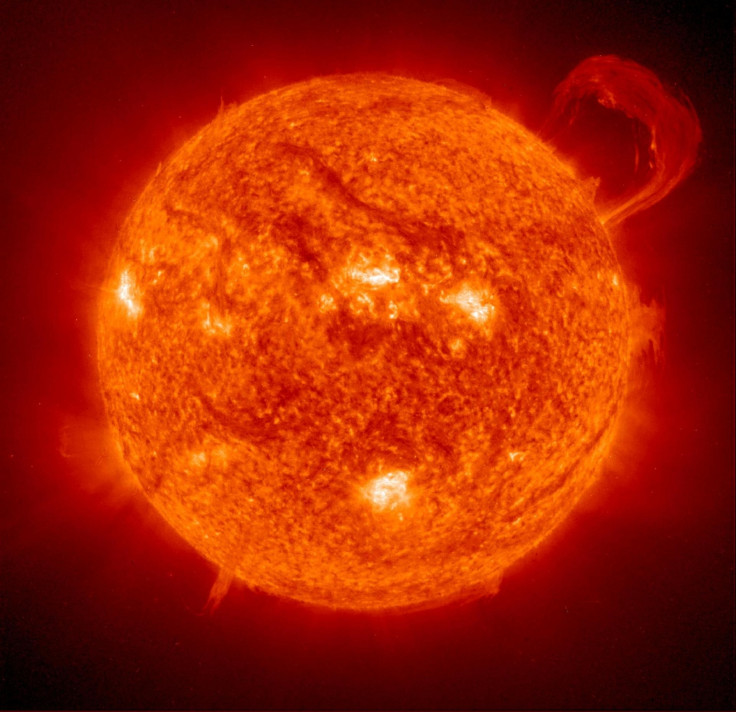Nasa Parker Solar Probe: Just how close can we get to the Sun?
Nasa's mission to 'touch the Sun' will see its solar probe fly closer to the Sun than ever before.

Nasa has announced a new and ambitious mission to the Sun, which will see one of the space agency's solar probes fly closer to the Sun than any other spacecraft ever has before. Nasa's historic Solar Probe Plus mission will involve the spacecraft journeying directly into the Sun's atmosphere to collect data that may help scientists unlock further space mysteries.
The space agency describes the mission as its first ever forage into space to "touch the Sun." Nasa said that in the course of its journey and orbit, the solar probe will face extreme temperatures and radiation, the likes of which no other spacecraft has ever experienced. In the face of such challenges, how does Nasa plan to ensure success of the mission - and how close can the solar probe get to the Sun?
Just how close will the solar probe get?
According to Nasa, the solar probe will fly as close as 6.2 million kilometres from the Sun, which is over seven times closer than any other spacecraft has ever travelled.
This means the probe will face temperatures as high as 1,377C and also encounter solar winds and "millions of tons of highly magnetised material" erupting from the Sun's corona at extreme speeds.
In order to ensure that the spacecraft and its equipment remain functional even when experiencing such extreme environments, Nasa designed the probe to come with a 4.5-inch-thick carbon-composite shield to protect the spacecraft from the Sun's heat. The solar-powered probe will also include solar arrays that have been designed to retract and extend as the spacecraft travels toward or away from the Sun during its orbit. The solar arrays are meant to ensure that the spacecraft and its cargo remain operating at the proper temperatures and power levels.
The spacecraft's journey to the Sun will not be straightforward. Instead, it will make seven Venus fly-bys in the course of nearly seven years as it gradually settles into its orbit around the Sun.
"At closest approach, Solar Probe Plus will be hurtling around the Sun at approximately 450,000 miles per hour. That's fast enough to get from Philadelphia to Washington, D.C., in one second," Nasa said in a statement.
The mission's objective
The primary objective for the solar mission is to better understand how the Sun functions, which Nasa says will also help scientists uncover the mysteries behind the so-far unpredictive space weather. The space agency said that the data gathered by the solar probe will "revolutionise our understanding of the Sun."
"The primary science goals for the mission are to trace the flow of energy and understand the heating of the solar corona and to explore what accelerates the solar wind," Nasa said. "This mission will provide insight on a critical link in the Sun-Earth connection. Data will be key to understanding and, perhaps, forecasting space weather."
What equipment will the probe carry and how will it study the Sun?
The Solar Probe Plus will conduct 4 major investigations during its orbit around the Sun. The probe will carry specific equipment for each of the investigations which will help it provide a statistical survey of the Sun's outer corona.
The four investigations include a field experiment, which will measure electric and magnetic fields, plasma density, radio emissions and more. The integrated science investigation of the Sun will observe the energetic electrons, protons and heavy ions in the Sun's atmosphere. The wide-field imager, which is essentially a telescope, will take pictures of the corona, inner heliosphere and solar winds and the Solar Wind Electrons Alphas and Protons (SWEAP) Investigation will analyse the properties of solar wind particles.
All of the various aspects of the Sun that Nasa wants to study as part of its mission will help it discover more about not just the Sun, but also about the connections between the Sun and the Earth. Although Nasa says that the data gathered may bring up more questions than answers, the mission will still play a critical role in providing valuable information about the mysteries of space.
"Until we can explain what is going on up close to the sun, we will not be able to accurately predict space weather effects that can cause havoc at Earth," the space agency added.
© Copyright IBTimes 2025. All rights reserved.






















